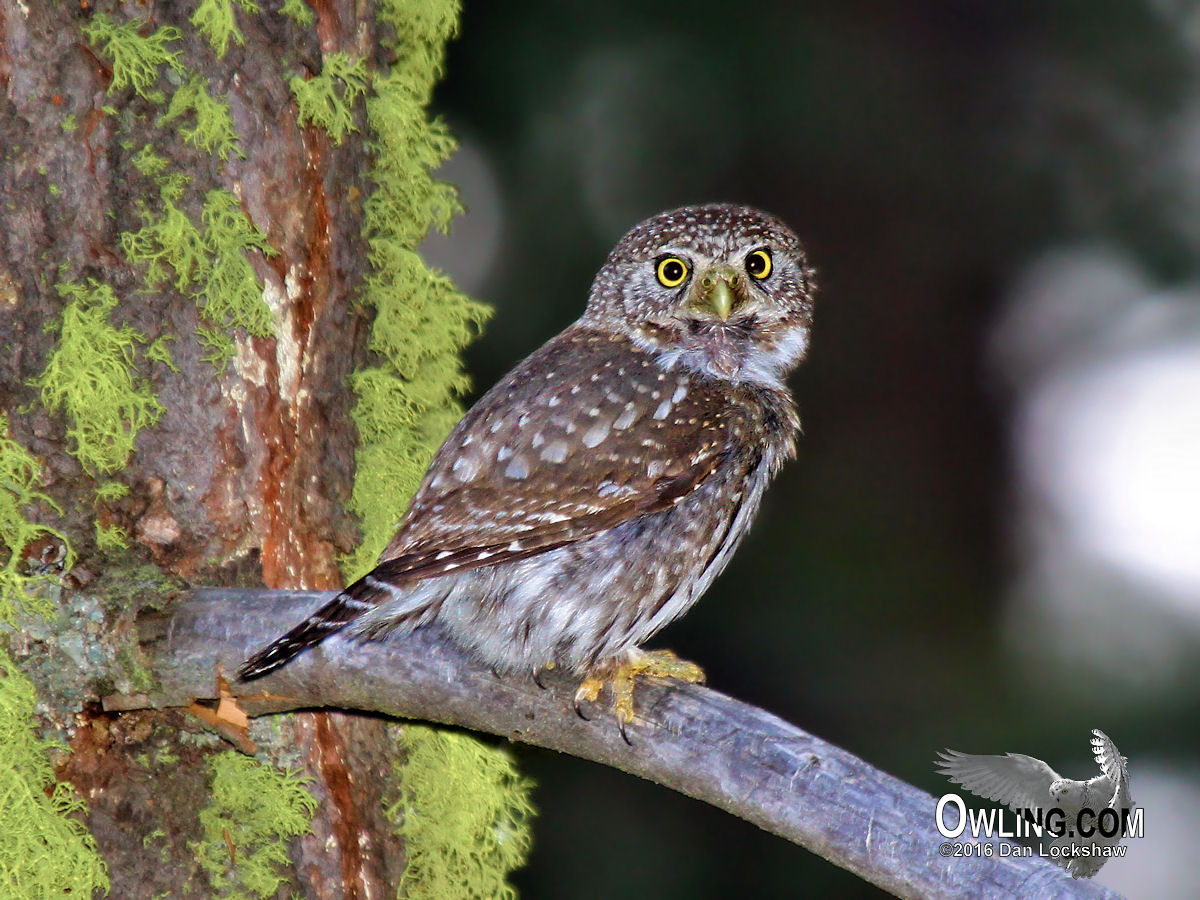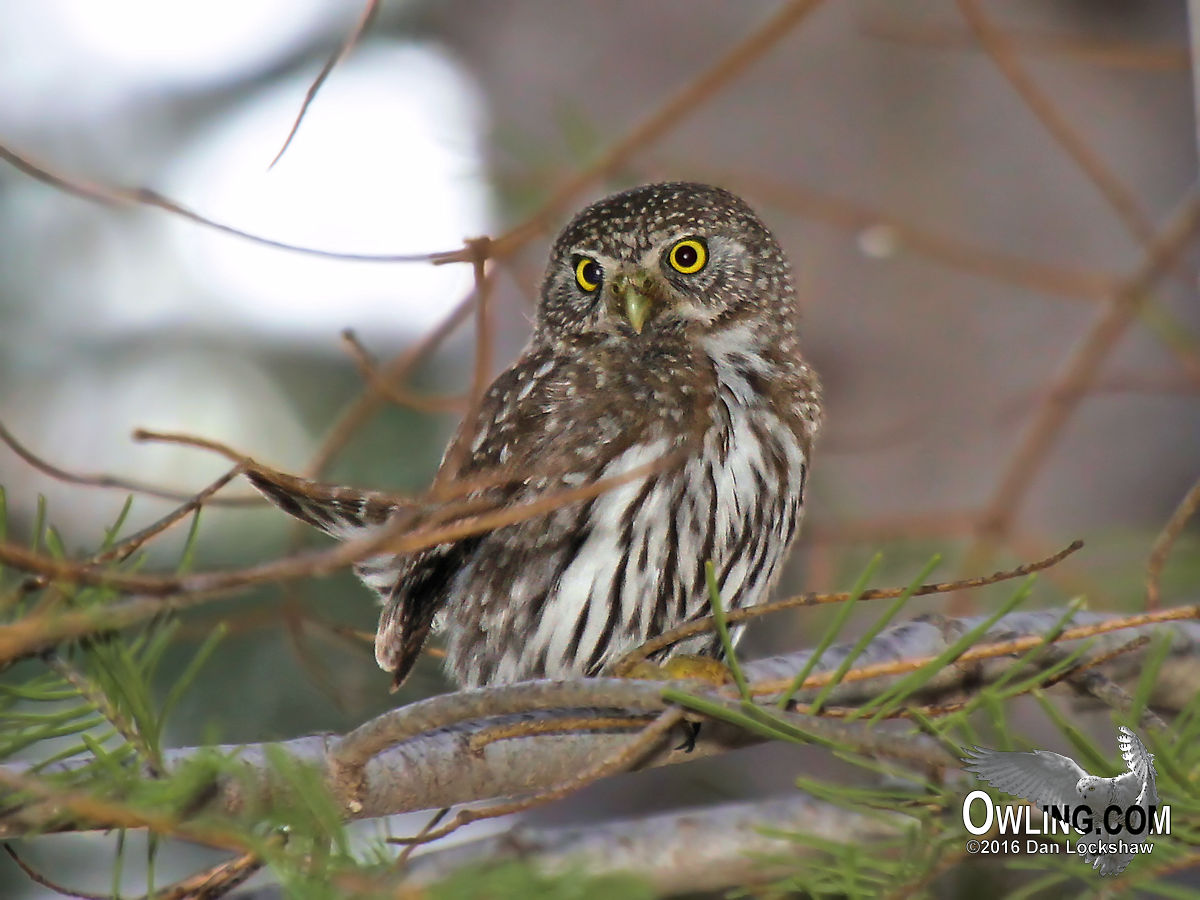Northern Pygmy-Owl Biology
A Reference for North and Central American Owls
Name: Northern Pygmy-Owl – Glaucidium californicum
Other Common Names: Californian Pygmy-Owl (californicum); Coast Pygmy-Owl (grinnelli); Rocky Mountain Pygmy-Owl (pinicola); Vancouver Pygmy-Owl (swarthi)
Subspecies: There are four races of Northern Pygmy-Owl in North America.
G. c. swarthi is restricted to Vancouver Island.
G. c. grinnelli stretches along the West Coast of North America from S.E. Alaska all the way to S. California.
G. c. californicum is the most widespread race in North America. It ranges from the northern interior of British Columbia and east to Alberta then south into Nevada and S. California .
G. c. pinicola is found from Idaho and Montana south to California and Nevada. This race is sometimes combined with G. c. californicum.
**Note: Because of recent DNA evidence, Northern Pygmy-Owl, which may have been formerly considered a race of Glaucidium gnoma, is considered in this text as its own separate nominant species; Glaucidium californicum with its four races defined above. The additional races G. g. cabanense, and G. g. haskinsii are also considered by this site as the separate species G. cabanense (Guatemalan Pygmy-Owl), and G. haskinsii (Baja Pygmy-Owl) respectively. G. gnoma (Mountain Pygmy-Owl), which ranges from S.E. Arizona and S.W. New Mexico south through the interior highlands of Mexico to Oaxaca is accepted as its owl species by this site. If the AOU & ABA also accepts this division we will have a new species of Pygmy-Owl in North America(!), the Mountain Pygmy-Owl. The Mountain Pygmy (G. gnoma) is also slightly smaller (.4in. average) than the Northern Pygmy-Owl and its toots (notes of call) come faster and in pairs of 2 notes where the Northern Pygmy-Owl (G. californicum) has slower evenly spaced single notes to its call.
Measurements and Weights:
Wingspan: 14.5 – 16 in.
Length: 7 – 7 1/2 in.
Tail: 2 1/4 – 2 1/2 in.
Average Weight: Male: 2.2 oz.
Average Weight: Female: 2.6 oz.
Description: A small owl lacking ear tufts. Male and female are identical in plumage. Except for a very limited area in Southern Arizona where the Ferruginous Pygmy-Owl is also found (see the Ferruginous Pygmy-Owl biology for the differences), this little owl is not likely to be mistaken for any other owl. First this is a diurnal owl (active in daytime); its small size, plump shape, long narrow tail, bold white eyebrows, brown streaks on white under parts, and white spotting on a brown head and forehead make it very distinctive (the backside is also brown with larger white spots). It has 2 black patches on its nape, outlined in white, that vaguely resemble an extra set of eyes. It has a dark brown tail with white bars; grayish-yellow bill (darker at the base); and lemon yellow iris. The owl becomes more grayish-brown overall in the Rockies and there is a red phase bird that is more cinnamon-brown overall. This little owl is very bold and will often allow a very close approach. Although it is not brightly colored, it very often brings a crowd of mobbing songbirds along with it that will betray its location. It also has a distinctive low evenly spaced toot (call) that makes finding this owl among other daytime birds easier (regularly calls although actively vocalizes most in March through mid-June and September through October).
Young: The young are similar in plumage to the adults. Just like the Ferruginous Pygmy-Owl the young do not develop their white markings until they mature. As a juvenile owl the white spots on the crown are not developed. The Northern Pygmy juvenile is still distinguishable from the Ferruginous Pygmy, in the small range where they could possibly overlap, by his white tail bands (the Ferrug. having reddish-brown bands).




